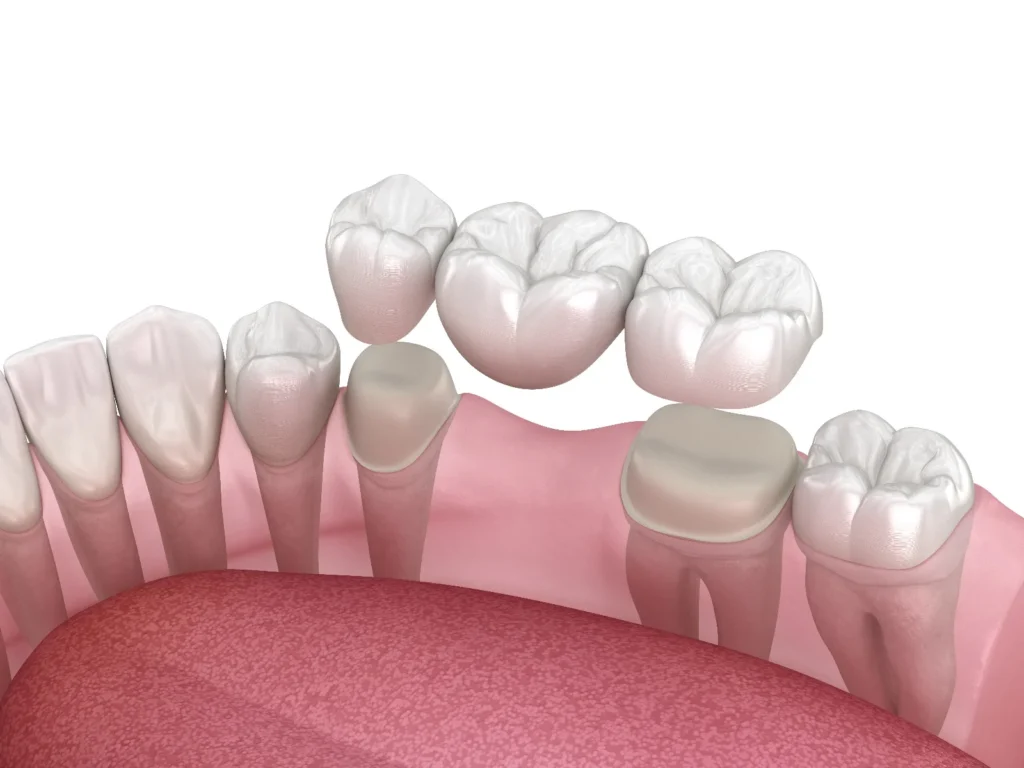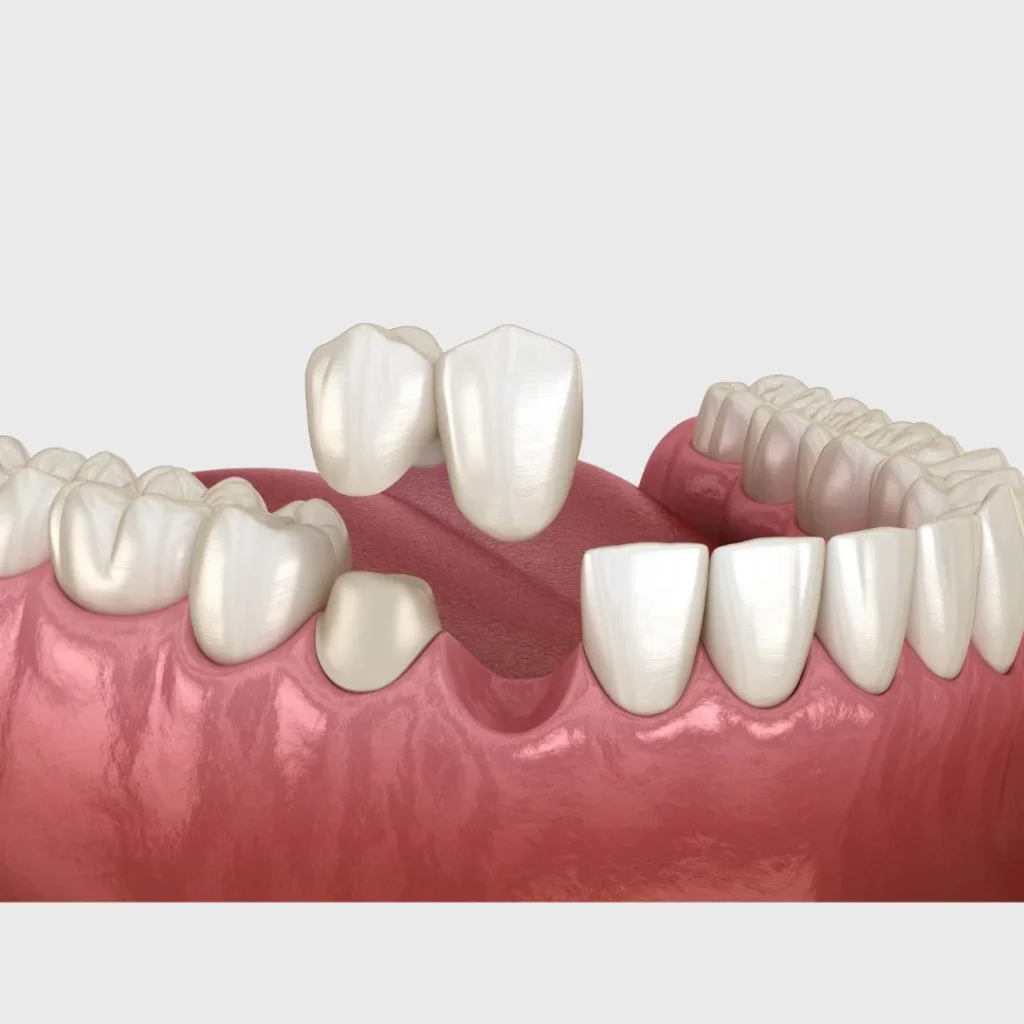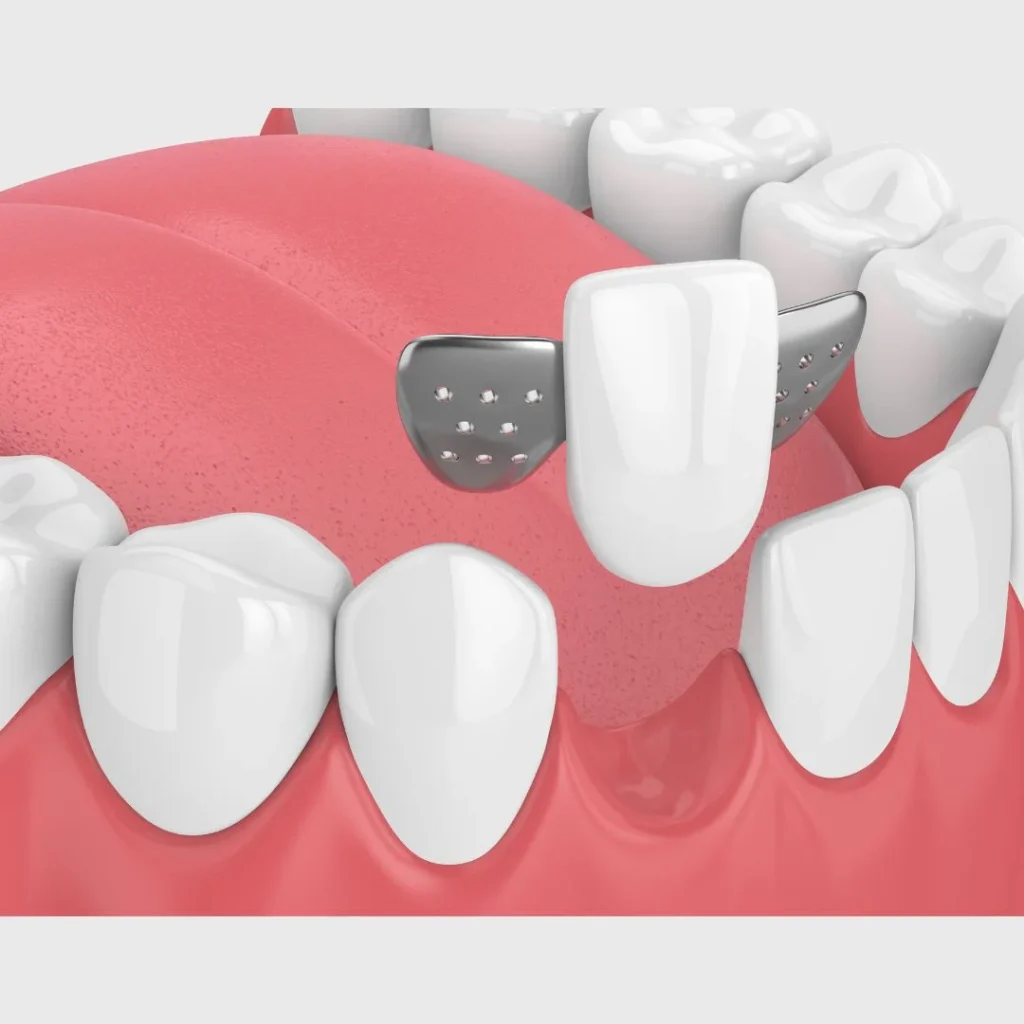Dental Bridges In Chandler's Ford
Restore Your Smile and Confidence with Custom Dental Bridges
All You Need To Know About Dental Bridges
Dental Bridges For Filling Gaps
- 1. A dental implant is the first choice, offering high success rates and long-term durability. It does not affect adjacent teeth, unlike bridges and dentures.
- 2. Another option is a dental bridge, which involves securing a false tooth to neighbouring teeth. It provides a permanent solution that does not require removal.
- 3. Alternatively, a denture is a removable option suitable for multiple missing teeth across both sides of the arch. However, it may not be ideal for a single missing tooth due to potential movement while eating.
- 4. Lastly, leaving the gap from a missing tooth can lead to unwanted movement of nearby teeth, affecting your bite and potentially reducing the lifespan of adjacent teeth.
Transform Your Smile With Our Custom Dental Bridges
Schedule your consultation now for a brighter, confident future.
Types of Dental Bridges
- A Traditional 3-Tooth Bridge
A traditional dental bridge includes a fake tooth, called a “pontic,” that’s held in place by crowns on the teeth next to it. But to fit these crowns, the nearby teeth have to be filed down, which isn’t ideal. Also, bridges might not last forever and could need to be replaced after a while.

- A Cantilever Bridge
A cantilever bridge is like a traditional three-tooth bridge but with only two teeth: the false tooth (pontic) and one supporting abutment tooth. Because cantilever bridges are only supported on one side, there’s a higher risk of problems like the supporting tooth fracturing or coming loose often due to uneven chewing pressure. This type of bridge isn’t recommended much anymore because it usually leads to the eventual loss of the supporting tooth.

- A Maryland Bridge
A Maryland bridge is sometimes used to replace a single missing front tooth. It resembles a single tooth with wings on each side. These small extensions are bonded to the back of the adjacent teeth using resin, making it a more conservative option compared to traditional bridges because it doesn’t require filing down the adjacent teeth. However, Maryland bridges aren’t as durable as traditional bridges or implants. They rely on the strength of the bonding material, so they may not stay in place for extended periods. Maryland bridges aren’t suitable for replacing back teeth due to the strong biting forces they can’t withstand.

Some FAQs Dental Bridges
1. What Is The Procedure For Getting A Dental Bridge?
Step 1 – First, we’ll assess your situation and take x-rays to get a clear picture. Afterward, we’ll discuss all the different options with you, explaining the advantages and disadvantages of each. You can then decide which one works best for you.
Step 2 – Next, if needed, we’ll prepare your teeth before taking a scan.
Step 3 – Finally, we’ll check the dental bridge to ensure it fits perfectly, looks natural, and aligns correctly with your bite. You’ll get a chance to see the bridge and confirm you’re satisfied before we cement it in place. Once it’s cemented, we’ll let you know about any maintenance that might be necessary.
2. How Many Teeth Can You Have On A Bridge?
This is a really difficult question to answer as there is a myriad of situations that can occur. It depends upon your age, build, bite and the state of the neighbouring teeth, as well as lots of other factors that are too detailed to mention here. For adhesive bridges, you generally only want to have one false tooth for predictable success rates. For conventional bridges, bigger spans are possible – one of our dentists has created six units of bridgework, secured onto two teeth. If you would like more information on what can be done, it’s best to give us a call to discuss.
3. Which Teeth Can You Replace With A Bridge?
You can replace pretty much any teeth with a bridge. Front teeth are generally easier to replace using this method.
4. How Long Do Bridges On Teeth Last?
Typically, a dental bridge lasts between 5-15 years in most cases, although this can vary greatly based on your maintenance of the dental bridge and your oral hygiene.
5. How Do You Clean A Fixed Dental Bridge?
If the bridge is joined to both teeth either side, you will not be able to floss between them in the normal way. The best thing in this situation is to clean underneath the bridge by using either tepe brushes (interproximal brushes) or superfloss.
If the bridge is secured on one end only then you will be able to use floss and follow it underneath the bridge to clean all areas.
In either case we would recommend seeing a hygienist frequently to maintain your bridges and ensure longevity.
If you would like to find out more about dental bridges or book a consultation, please get in touch!

